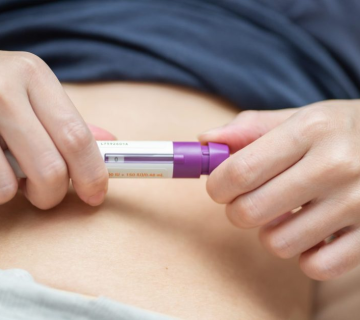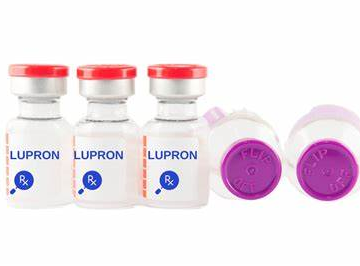
Estrace in IVF – Everything You Need to Know
Introduction
In vitro fertilization, or IVF, is a journey many people take to build their families. It’s a process where eggs are collected, fertilized in a lab, and then placed into the uterus to grow into a baby. But for that tiny embryo to settle in and thrive, the uterus needs to be ready—like a cozy, welcoming home. That’s where Estrace comes in.
Estrace is a medication that helps prepare your body for IVF. It’s a type of estrogen, a hormone that thickens the lining of your uterus (called the endometrium) so the embryo can stick and grow. If you’re going through IVF, understanding Estrace can make the process feel less overwhelming. In this article, we’ll cover everything about Estrace in IVF—how it works, why it matters, what to expect, and even the latest research. Plus, we’ll share tips to help you along the way. Let’s dive in!
What is Estrace?
Estrace is the brand name for a medication made of estradiol, a form of estrogen. Estrogen is a hormone your body naturally makes to help with things like growing the uterine lining during your menstrual cycle. In IVF, Estrace steps in to give your body an extra boost of estrogen when it’s needed most.
You can take Estrace as a pill you swallow or as a suppository you insert into your vagina. Both forms get the job done, but your doctor will pick the one that’s best for you. What makes Estrace special is that it’s bioidentical—meaning it’s the same as the estrogen your body makes, which can make it easier for your system to handle.
Other estrogen options, like patches or creams, exist, but Estrace is a go-to for many IVF patients because it’s straightforward and effective. Knowing what it is can help you feel more in control as you start this part of your IVF journey.
The Role of Estrace in IVF
Imagine your uterus as a garden where an embryo is the seed. For that seed to grow, the soil—your uterine lining—needs to be soft, thick, and full of nutrients. Estrace is like the water and fertilizer that make the garden perfect.
In IVF, Estrace helps build up the endometrium so it’s ready for the embryo to implant. This is super important because a thin or unprepared lining can make it harder for the embryo to stick. Doctors often use Estrace in cycles where your ovaries are quiet—like in frozen embryo transfers—or when your body isn’t making enough estrogen on its own.
After the embryo is placed in your uterus, Estrace might stick around a bit longer to keep the lining strong until your pregnancy can take over. It’s a key player in making sure your body is ready for this big moment.
How is Estrace Administered in IVF?
Taking Estrace isn’t complicated, but it does need to be done right. Here’s how it usually works:
Methods of Taking Estrace
-
- Oral Pills: You swallow these with water, often 2 to 6 milligrams a day. Your doctor might split this into two doses—like one in the morning and one at night.
-
- Vaginal Suppositories: You insert these into your vagina, usually with your fingers or an applicator. This method sends the estrogen straight to where it’s needed.
When Do You Start?
The timing depends on your IVF plan. For a frozen embryo transfer, you might begin Estrace on the first day of your cycle (when your period starts) and take it for 10 to 14 days before the transfer. Your doctor will check your lining with an ultrasound to see if it’s thick enough—usually aiming for at least 7 millimeters.
Step-by-Step Guide to Taking Estrace
For Oral Pills
-
- Set a Time: Pick a consistent time each day, like with breakfast or before bed.
-
- Swallow with Water: Take it with a full glass to help it go down smoothly.
-
- Don’t Skip: Missing a dose can mess with your hormone levels, so stay on track.
For Vaginal Suppositories
-
- Wash Up: Clean your hands to keep things germ-free.
-
- Get Comfortable: Lie down or stand with one leg up—like on a chair.
-
- Insert Gently: Push the suppository in about an inch or two. It’ll melt and absorb on its own.
-
- Relax: Stay lying down for 20-30 minutes so it doesn’t leak out.
Tips for Success
-
- ✔️ Use a phone alarm to remind you.
-
- ✔️ Keep Estrace in a cool, dry place (not the bathroom—it’s too humid).
-
- ❌ Don’t double up if you miss a dose; call your clinic instead.
Your doctor will tweak the plan based on how your body responds, so don’t worry if it changes a little.
Benefits of Using Estrace in IVF
Estrace does some pretty amazing things for IVF. Here’s why it’s so helpful:
Thickens the Uterine Lining
A thick lining is like a fluffy mattress for your embryo—it gives it a soft spot to land. Studies show that a lining of 7 millimeters or more boosts your chances of getting pregnant. Estrace helps get you there by making the endometrial cells grow.
Makes the Lining Receptive
It’s not just about thickness. Estrace helps the lining develop tiny blood vessels and glands that feed the embryo. Think of it like adding a welcome mat and a snack bar for your little guest.
Supports Early Pregnancy
After the embryo implants, Estrace keeps the lining stable until your body’s hormones kick in fully—usually around 8 to 10 weeks into pregnancy.
What the Research Says
A study from the Journal of Assisted Reproduction and Genetics found that higher estrogen levels (thanks to meds like Estrace) were linked to better implantation rates. Another study in Fertility and Sterility showed that a lining prepared with estrogen for about two weeks had higher success rates. It’s solid proof that Estrace is doing its job.
Why It Matters to You
With Estrace, you’re giving your embryo the best shot at sticking around. It’s a small step that can make a big difference.
Potential Side Effects and How to Manage Them
Estrace is generally safe, but it can cause some side effects. Here’s what you might notice and how to handle it:
Common Side Effects
-
- Bloating: You might feel puffy or full, like you ate too much at dinner.
-
- Breast Tenderness: Your chest might feel sore or heavy.
-
- Mood Swings: You could feel up one minute and down the next.
-
- Headaches: A mild ache or tension might pop up.
-
- Nausea: Especially with pills, your stomach might feel off.
Why Do These Happen?
Estrogen changes how your body holds water and affects your hormones, which can lead to these feelings. It’s your system adjusting to the extra boost.
Managing Side Effects
Here’s a handy table to help:
| Side Effect | What to Do |
|---|---|
| Bloating | Drink water, eat fiber-rich foods (like fruits and veggies), walk around a bit. |
| Breast Tenderness | Wear a comfy bra, skip caffeine, try a warm towel on your chest. |
| Mood Swings | Take deep breaths, listen to music, talk to someone you trust. |
| Headaches | Rest, sip water, use a pain reliever if your doctor says it’s okay. |
| Nausea | Take it with a snack, or ask about switching to suppositories. |
Rare but Serious Side Effects
Though uncommon, watch for:
-
- Chest pain or trouble breathing (could signal a clot).
-
- Sudden severe headache or vision changes (might mean something serious).
If these happen, call your doctor right away.
Real-Life Tip
Sarah, an IVF patient, said, “I felt bloated on Estrace, but sipping peppermint tea and keeping busy helped. It wasn’t fun, but it was worth it when I saw my lining was perfect.”
Most side effects fade as your body gets used to the medication. Keep your doctor in the loop—they can adjust things if it’s too much.
Precautions and Contraindications
Estrace isn’t for everyone. Here’s when you should pause and talk to your doctor:
Who Should Avoid Estrace?
-
- Blood Clot History: Estrogen can raise your clotting risk, so if you’ve had clots before, it might not be safe.
-
- Liver Problems: Your liver processes Estrace, so if it’s not working well, the drug could build up.
-
- Certain Cancers: If you’ve had breast or uterine cancer that feeds on estrogen, Estrace could make it worse.
-
- Allergies: If you’re allergic to estradiol, this isn’t the drug for you.
Medication Interactions
Estrace can mix oddly with:
-
- Blood thinners (like warfarin).
-
- Thyroid meds (it might change how they work).
-
- Some herbal supplements (like St. John’s Wort).
Tell your doctor everything you’re taking—even vitamins—so they can check for clashes.
What If You Can’t Take It?
If Estrace isn’t an option, your doctor might try another estrogen form or adjust your IVF plan. There’s always a workaround tailored to you.
Success Rates and Effectiveness
Does Estrace really make IVF work better? Let’s look at the numbers and what they mean.
The Research
-
- A Fertility and Sterility study found that women with a lining of 7+ millimeters had a 30-40% higher pregnancy rate than those with thinner linings.
-
- Research in Human Reproduction showed that 10-14 days of estrogen (like Estrace) before transfer led to better outcomes than shorter or longer times.
What This Means
Estrace doesn’t guarantee a baby—it’s just one piece of the IVF puzzle. Your age, embryo quality, and other factors play big roles too. But by getting your lining ready, Estrace ups your odds.
Comparing to Alternatives
Some clinics use patches or injections instead of Estrace. A small study in 2023 hinted that vaginal Estrace might edge out oral forms for thicker linings, but it’s not a huge difference. Your doctor picks what fits your body best.
Keep It in Perspective
Success isn’t just about Estrace—it’s about the whole IVF team effort. It’s like baking a cake: Estrace is the flour, but you still need eggs, sugar, and heat to make it work.
Patient Experiences and Testimonials
Hearing from others can make Estrace feel less mysterious. Here are some real stories:
Sarah, 34
“I was nervous about taking Estrace every day, but my clinic gave me a chart to follow. The bloating was annoying, but seeing my lining grow on the ultrasound made it all worthwhile. I’m pregnant now!”
Emily, 29
“The vaginal suppositories freaked me out at first, but they were easy once I got the hang of it. I stayed lying down after, and my lining hit 8 millimeters. First IVF try, and it worked!”
Mark, 41 (Partner Perspective)
“My wife used Estrace, and I helped her stay on schedule. She had mood swings, but we got through it together. Seeing her smile at the positive test was the best moment.”
These stories show that while Estrace has its challenges, it’s a hurdle many leap over successfully.
Frequently Asked Questions
Got questions? We’ve got answers:
Can I Take Estrace If I’m Allergic to Estrogen?
No—if you’re allergic, tell your doctor. They’ll find something else.
What If I Miss a Dose?
Take it as soon as you remember, unless it’s almost time for the next one. Don’t double up—call your clinic for advice.
Is Alcohol Okay with Estrace?
A little might be fine, but too much can mess with your hormones. Ask your doctor.
How Long Do I Take It?
Usually a few weeks before transfer, and maybe 8-10 weeks after if you’re pregnant. It varies by plan.
Are There Natural Options?
Some folks try foods like soy, but they don’t match Estrace’s precision. Stick with what your doctor prescribes.
Does Estrace Cause Weight Gain?
Not directly—it’s mostly water retention. It should go away after treatment.
These cover the basics, but your clinic is the best place for personal answers.
Latest Research and Developments
Science keeps moving, and Estrace is no exception. Here’s what’s new:
Recent Studies
-
- A 2023 study in Journal of Reproductive Medicine found vaginal Estrace might build thicker linings than pills in some cases.
-
- At the American Society for Reproductive Medicine, researchers suggested customizing Estrace doses based on your genes could boost success.
-
- A small trial hinted that pairing Estrace with extra progesterone might make the lining even more welcoming.
What’s Next?
Scientists are exploring if tiny tweaks—like timing or delivery—could make Estrace work better. There’s no big replacement yet, but the future looks promising.
Expert Take
Dr. Orion Nightingale, a reproductive endocrinologist, says, “Estrace is a cornerstone of endometrial preparation in IVF. It helps us create the optimal environment for embryo implantation, which is crucial for success.”
Stay tuned—your doctor will let you know if new findings change your plan.
Expert Insights
Fertility pros have a lot to say about Estrace. Here’s wisdom from the field:
Dr. Ophelia, Fertility Specialist
“Patients often worry about side effects, but in my experience, most find the benefits outweigh the temporary discomfort. Open communication with your healthcare team is key.”
Dr. Caspian Sterling, IVF Researcher
“We’re constantly learning more about how to optimize estrogen therapy in IVF. New research is helping us tailor treatments to each patient’s unique needs.”
These experts remind us that Estrace is a tool—and teamwork makes it work best.
Practical Tips for Patients
Taking Estrace is easier with a few tricks up your sleeve. Here’s how to nail it:
General Tips
-
- ✔️ Set Reminders: Use your phone or a sticky note.
-
- ✔️ Stay Steady: Take it at the same time daily.
-
- ✔️ Track Symptoms: Note how you feel and share with your doctor.
-
- ❌ Don’t Stress: Missing one dose won’t ruin everything—just call for help.
For Oral Pills
-
- Take with a meal to cut nausea.
-
- Keep a water bottle handy to wash it down.
For Vaginal Suppositories
-
- Insert at bedtime so you can rest after.
-
- Use a panty liner for any mess.
-
- Store in the fridge if your clinic says so—it keeps them firm.
Lifestyle Boosts
-
- Eat Smart: Load up on veggies and lean protein to feel your best.
-
- Move a Little: A short walk can ease bloating.
-
- Chill Out: Try a warm bath or a good book to unwind.
These small steps can make Estrace feel like less of a chore.
Conclusion
Estrace might just be a pill or suppository, but it’s a big deal in IVF. It gets your uterine lining ready for an embryo, supports early pregnancy, and gives you a better shot at success. Sure, there might be some bloating or mood swings, but with the right know-how, you can handle it.
Your IVF journey is yours alone, and Estrace is just one part of it. Lean on your doctors, ask tons of questions, and take it one day at a time. You’ve got this—and we’re rooting for you.
Let’s Get Interactive!
Your Estrace Checklist
-
- ✔️ I know my dose and schedule.
-
- ✔️ I’ve got reminders set.
-
- ✔️ I’m ready to manage side effects.
-
- ✔️ I’ll call my doctor with questions.
Quick Quiz: Test Your Estrace Smarts
-
- What does Estrace do in IVF?
-
- a) Grows eggs
-
- b) Thickens the lining
-
- What does Estrace do in IVF?
-
- How can you take it?
-
- a) Pill or shot
-
- b) Pill or suppository
-
- c) Patch or spray
-
- How can you take it?
-
- What’s a common side effect?
-
- a) Bloating
-
- b) Hair growth
-
- c) Fever
-
- What’s a common side effect?
Answers: 1-b, 2-b, 3-a. How’d you do?
Share Your Story
Have you used Estrace in IVF? Drop a comment below—what worked for you? What surprised you? Your tips could help someone else!



